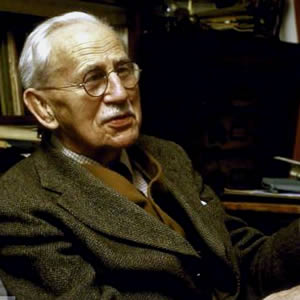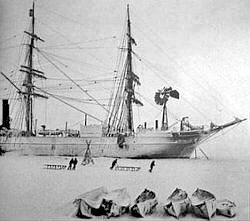Alister Hardy facts for kids
Quick facts for kids
Sir Alister Hardy
FRS
|
|
|---|---|
 |
|
| Born |
Alister Clavering Hardy
10 February 1896 Nottingham, Nottinghamshire, England
|
| Died | 22 May 1985 (aged 89) Oxford, Oxfordshire, England
|
| Known for | RRS Discovery work Continuous Plankton Recorder Aquatic ape hypothesis |
| Spouse(s) | Sylvia Garstang |
| Parent(s) | Richard Hardy and Elizabeth Hannah Clavering |
| Awards | Fellow of the Royal Society, Templeton Prize |
| Scientific career | |
| Fields | Marine zoology |
| Institutions | University of Hull, University of Aberdeen, University of Oxford |
| Influenced | Elaine Morgan |
Sir Alister Clavering Hardy (born February 10, 1896 – died May 22, 1985) was an English scientist who studied life in the ocean. He was an expert on everything from tiny sea creatures called zooplankton to giant whales. He was also a talented artist. He drew his own pictures, maps, and diagrams for his books.
Hardy worked as a zoologist on the RRS Discovery ship. He explored the Antarctic between 1925 and 1927. During this trip, he invented the Continuous Plankton Recorder. This amazing tool allowed any ship to collect samples of plankton while sailing normally.
After he retired from his university work, Hardy started the Religious Experience Research Centre in 1969. He won the Templeton Prize in 1985 for this work.
Contents
Artist and Scientist: A Unique Blend

Rare and Unusual Fish in British Waters.
- Opah, Lampris guttatus
- Sea Horse, Hippocampus europaeus
- Red Bandfish, Cepola rubescens
- Rabbit-fish, Chimaera monstrosa
Alister Hardy was born in Nottingham, England. His father, Richard Hardy, was an architect. Alister went to Oundle School. He planned to go to Oxford University in 1914. But World War I started, so he joined the army instead.
He became a "camoufleur," which is an officer who designs camouflage. Camouflage helps hide things, like soldiers or equipment, by making them blend in. Hardy once wrote that he loved both science and art. He felt lucky because he could combine them in his work.
A famous artist named Solomon J. Solomon chose Hardy for camouflage work. He thought Hardy was a different artist. But Alister Hardy was artistic enough for the job. He drew all the pictures for his science books. These included line drawings, maps, diagrams, and paintings. For example, his book Fish and Fisheries has a vivid drawing of "Rare and Unusual Fish in British Waters."
Later in his life, Hardy traveled to many countries. He visited India, Sri Lanka, Burma, Cambodia, China, and Japan. He painted beautiful watercolors of the temples he saw. Many of these paintings are now at the University of Wales Trinity Saint David.
Exploring the Ocean: Zoology Work

Hardy was the main zoologist on the RRS Discovery ship. He sailed to the Antarctic from 1925 to 1927. This was part of the Discovery Investigations. He studied tiny sea creatures called zooplankton. He also looked at how they related to larger animals, like whales. This made him an expert in marine mammals.
While on the Discovery, he invented the Continuous Plankton Recorder (CPR). This device collects samples of plankton. It stores them on a moving silk band and keeps them safe. His important work on plankton is still continued today by the CPR Survey.
Hardy became the first Professor of Zoology at the University of Hull in 1928. He worked there until 1942. Then, he became a Professor at the University of Aberdeen. In 1946, he moved to the University of Oxford. He was a professor there until 1963. In 1940, he became a Fellow of the Royal Society. He was made a knight in 1957, which means he received the title "Sir."
Ideas on Evolution
Hardy believed in Darwinism, which is Charles Darwin's theory of evolution. He did not believe in Lamarckian ideas, which suggested that animals could pass on traits they gained during their lifetime. Hardy thought that changes in behavior could be very important for how species evolve.
The Aquatic Ape Idea
In 1930, Hardy was reading a book about how humans fit in with other mammals. He noticed that humans have fat attached to their skin, like the blubber of sea mammals. Most other land mammals do not have this. This made him wonder if humans might have had ancestors who lived more in water than previously thought.
He kept this idea a secret for a long time. He was worried that other scientists might not like such a new idea. In 1960, he finally shared his thoughts. This idea became known as the aquatic ape hypothesis. A writer named Elaine Morgan helped make this idea more famous. She often said that Sir Alister Hardy inspired her work.
Studying Religious Experiences
Since he was a boy, Hardy was interested in spiritual things. But he knew that these interests might seem unusual to other scientists. So, he mostly kept his opinions to himself. He only gave a few talks about it until he retired from Oxford.
After retiring, he gave lectures at Aberdeen University. These talks were about 'Evolution and the spirit of Man'. They were later published as books called The Living Stream and The Divine Flame. These books showed his strong interest in religion.
In 1969, he started the Religious Experience Research Unit. This group began collecting stories of religious experiences. They still study how spiritual and religious experiences affect people. Hardy believed that religious awareness developed over time. He saw it as a natural part of human experience. For starting this research center, Hardy received the Templeton Prize in 1985.
Family Life
Sir Alister Hardy married Sylvia Garstang in 1927.
Books and Papers
Hardy wrote many scientific papers about plankton, fish, and whales. He also wrote popular books and books about religion.
- Books
- The Open Sea. Its Natural History (Part I) The World of Plankton. New Naturalist No. 34, Collins, 1956.
- The Open Sea. Its Natural History (Part II) Fish & Fisheries. New Naturalist No. 37, Collins, 1959.
- The Living Stream: A Restatement of Evolution Theory and its Relationship to the Spirit of Man. Collins, 1965.
- The Divine Flame: An Essay Towards A Natural History of Religion. Collins, 1966.
- The Spiritual Nature of Man: Study of Contemporary Religious Experience. Oxford University Press, 1979.
- Papers
- The Herring in Relation to its Animate Environment. Fish. Invest. Lond., II, 7:3. 1951.
- (with E.R. Gunther) The Plankton of the South Georgia Whaling Grounds and Adjacent Waters, 1926-7. 'Discovery' Report, II, 1–146.
Recognition
In 2011, South Georgia & South Sandwich Islands honored Hardy's important work. They released a set of four special stamps with his picture.
The University of Hull also named a building on its campus after him.

